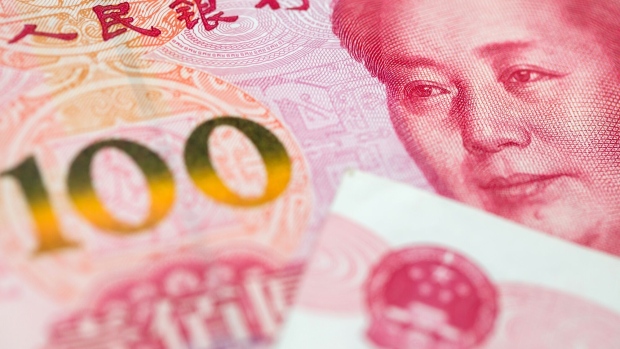May 28, 2024
Yuan Weakens to Lowest Since November as China Allows Declines
, Bloomberg News

(Bloomberg) -- China’s onshore yuan dropped to the weakest level since November as signs mount that policymakers are slowly letting the currency decline against a resilient dollar.
The yuan fell to as low as 7.2487 per dollar as the People’s Bank of China gradually cut its daily reference rate for the managed currency to a level unseen in four months. The move came as a gauge of the greenback edged higher for a second day on bets the Federal Reserve is still not close to kicking off its rate-cut cycle.
The PBOC has been facing a constant battle to find the optimal pace of yuan weakness that’s conducive for growth, without triggering market panic or capital outflows. For most of the year, the central bank has kept the currency steady but pressures have been building due to worsening capital outflows and lackluster domestic growth.
“The PBOC may allow further yuan depreciation,” said Ken Cheung, chief Asian FX strategist at Mizuho Bank. “The PBOC is focusing on slowing the pace of yuan depreciation — rather than defending a particular level — against the backdrop of higher-for-longer dollar rate environment.”
The yuan is not alone in struggling with depreciation pressures in Asia. The currency of its neighboring country Japan just hit the lowest since 2008 against the pound. The likes of the Thai baht and Indonesian rupiah are also inching close to multi-year lows touched recently.
Asian currencies are being weighed by their wide yield discount to the US, which favors the dollar. The rate gap concern is being exacerbated by bets Fed won’t be slashing rates anytime soon due to surprisingly resilient growth and sticky inflation.
“The higher dollar-yuan is in line with broader dollar moves as yields resumed uptick overnight,” said Christopher Wong, a strategist at Oversea-Chinese Banking Corp. The currency will further weaken on still-wide rate differentials with the US and anticipation of more US-China trade frictions, he added.
(Updates throughout.)
©2024 Bloomberg L.P.






